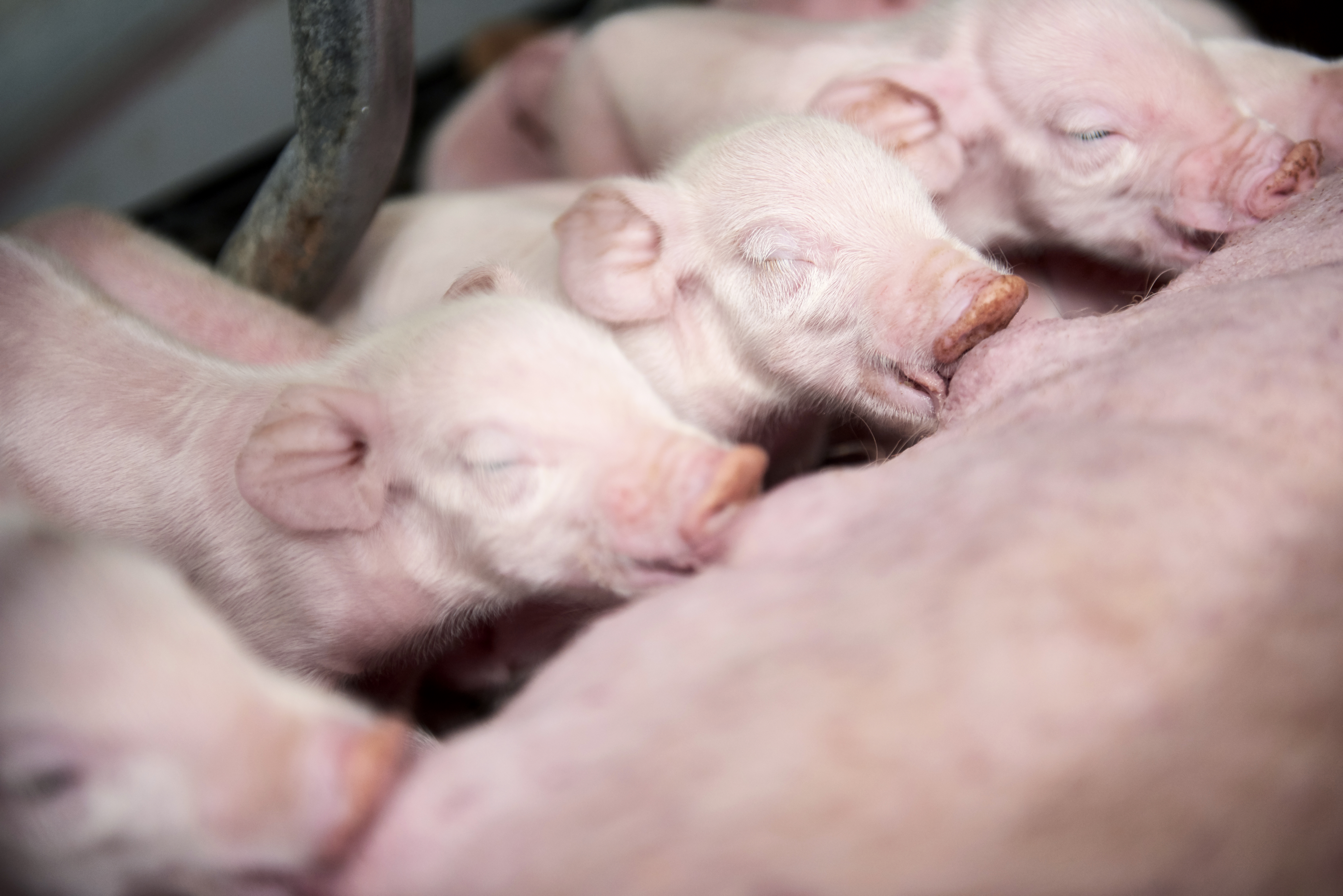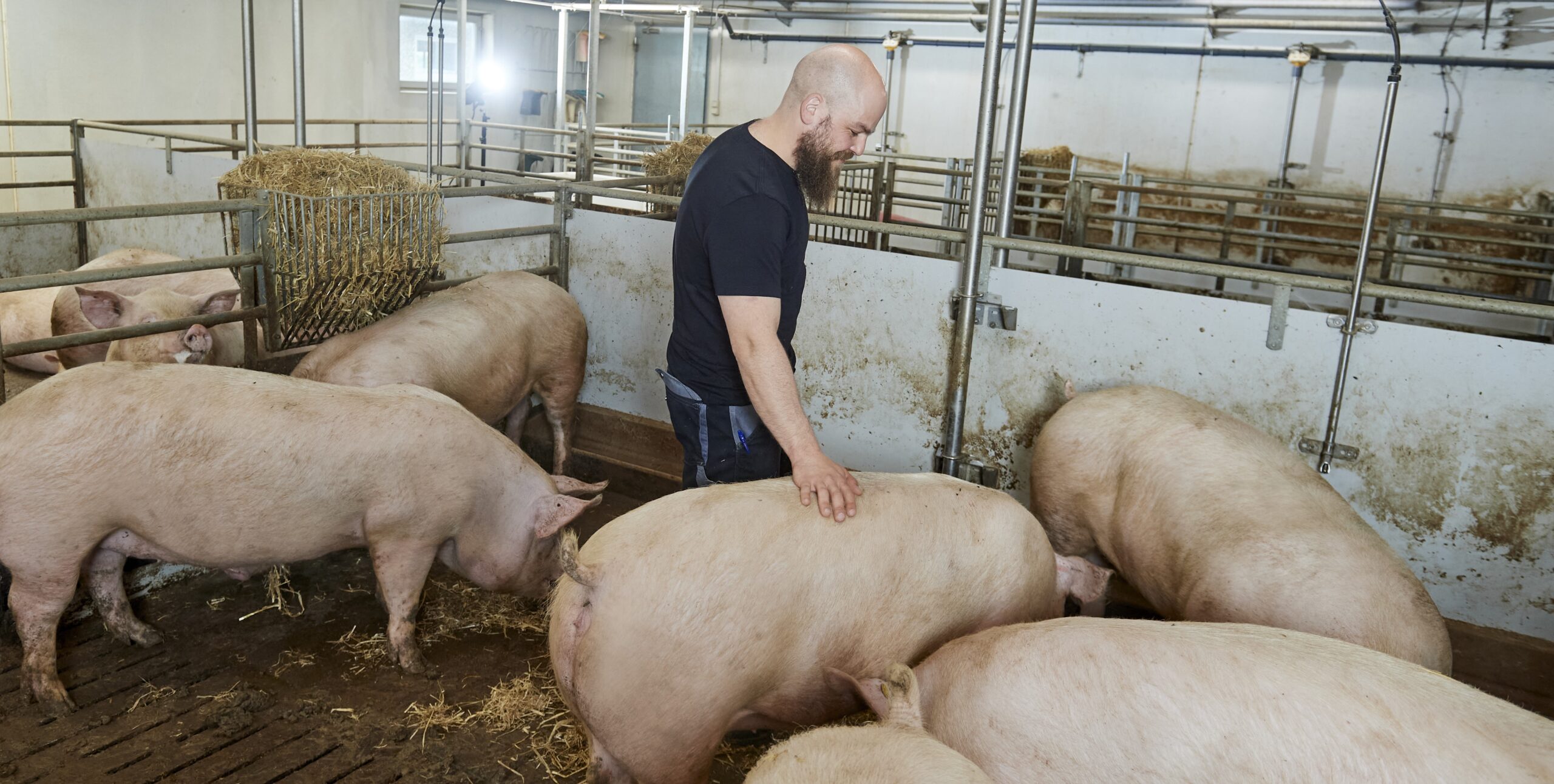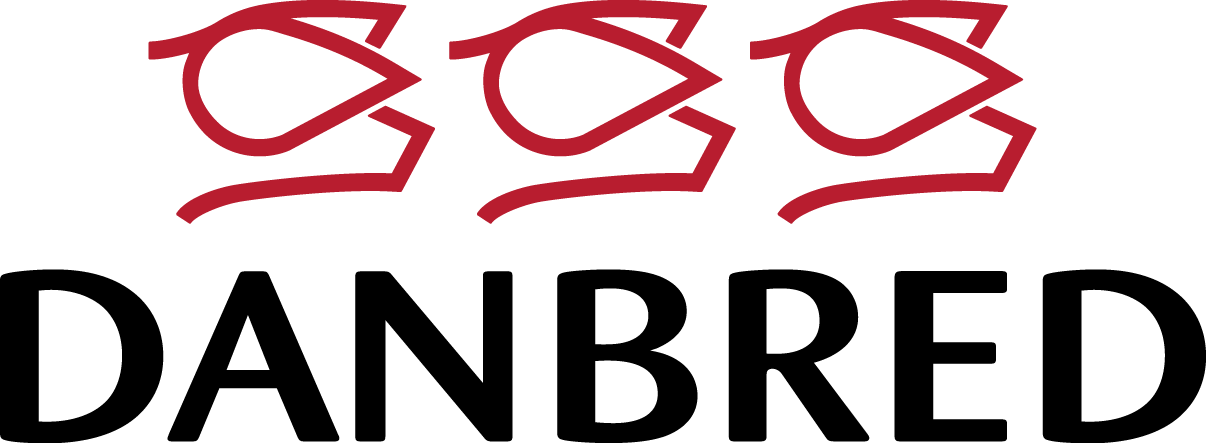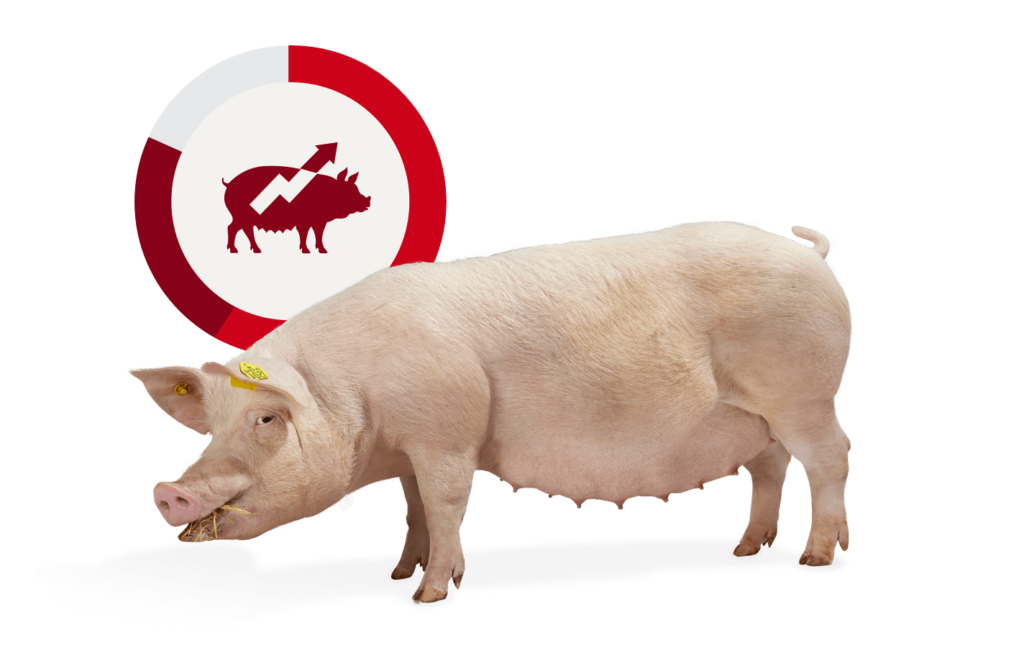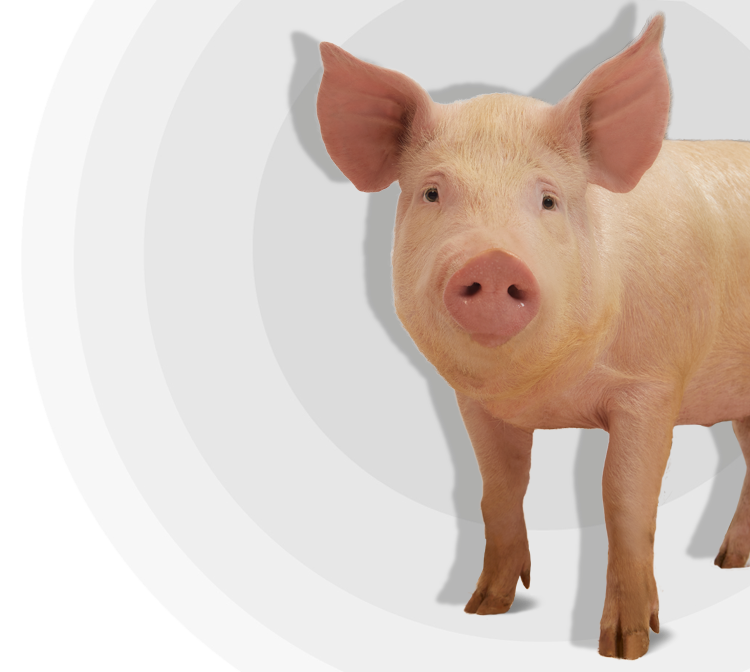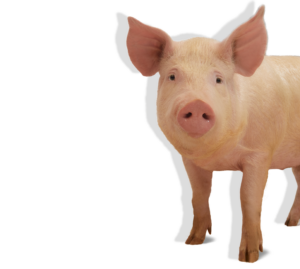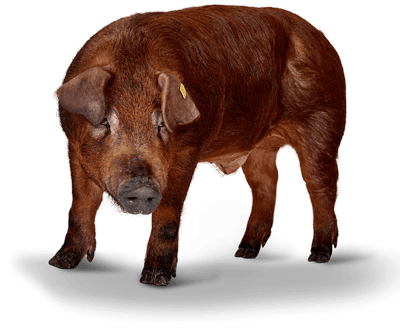By Helle Palmø, M.Sc., ph.d., Chief Geneticist at DanBred
The ongoing focus on global climate change and potential solutions has never been more explicit nor pertinent than it is today. Increasingly extreme weather conditions are being recorded all over the world, and the amount of scientific evidence for the global effects of greenhouse gases on the environment is increasing. Animal husbandry, including pig production, has been drawn into question due to its carbon footprint as well as the pollution of drinking water supplies from the fertilizers and pesticides used in the production of animal feed. In the future, pork must, therefore, compete with other types of meat that are thought to be more sustainable, including poultry as well as insect and laboratory meat products. Consequently, improving the sustainability of pork is necessary to ensure that pig production can continue in the future.
Sustainable pork production will simultaneously also address several of the United Nation Sustainable Development Goals, e.g. “no. 2: Zero Hunger”, “no. 3: Good Health and Well-Being”, “no. 12: Responsible Consumption and Production”, and “no. 13: Climate Action”. This is important because the rapid increase in pork consumption and production is expected to continue for a long time to come due to population growth and a reduction in poverty. Even if large parts of the Western world see a reduction in meat consumption per capita, the Food and Agriculture Organization of the United Nations predicts that global consumption will increase, driven by middle-income countries such as China and Brazil.
Therefore, the question is: How can pig breeding and genetics contribute to a more sustainable production of pork in future? Breeding programmes aiming to achieve genetic gain to produce more while using fewer resources is key to achieving this goal.
Genetic selection for sustainability
Genetic selection is a tool perfectly suited to improving sustainability. Firstly, because the key breeding goal of most commercial pig breeding programmes is to produce more using fewer resources, and secondly because any genetic improvements made are cumulative and mostly permanent. Genetic selection for feed conversion, growth, litter size, and survival all result in reduced feed consumption or waste – which in turn results in reductions in the emission of nutrients such as nitrogen and phosphorus as well as greenhouse gases such as methane and CO2.
Improved feed conversion reduces CO2 emissions and improves availability
When feed conversion is improved, the individual pig will consume less feed before it is slaughtered. As a result, it is possible to produce the same amount of pork for less feed, or more pork for the same amount of feed. The former will most likely reduce the price of pork through lowering costs, whereas the latter will reduce the price of pork through an increased supply-demand ratio, even in the face of a growing population. In both cases, there is potential to reduce the relative environmental impact and increase the availability of highly nutritive food, even for low-income areas of the world.
Genetic selection for growth leads to the same benefits as genetic selection for feed conversion. By reducing the time to slaughter, the amount of feed needed for maintenance is consequently also reduced. In fact, given current growth rates of e.g. DanBred finishers, each improvement of 0.1 kg feed/kg growth in feed conversion is estimated to reduce the requirement for feed per finisher by 7.5 kg. This is then expected to reduce CO2 emissions by approximately 4 kg per pig.
Increased litter size
When litter size is increased, the number of sows needed to produce the same number of piglets is reduced. For example, in Denmark, which produces the highest number of pigs per capita, it is estimated that for every increase in litter size of 1 piglet, the current sow population of ~1 million could be reduced by 25,000 sows, while maintaining an equivalent total number of 32 million piglets. This reduces the need for sow feed, with effects similar to those described for feed conversion and growth. As an additional benefit, there will also be a reduction in the relative amount of manure produced, which will in turn reduce the runoff from fields, eutrophication of freshwater sources, and CO2 emissions resulting from the transport of manure.
Genetic selection for survival leads to similar benefits, as it also reduces the number of sows needed to produce the same number of piglets, while also reducing feed waste. In other words, the total amount of feed needed to deliver a batch of pigs from birth to slaughter will be reduced. These are all examples of how pig breeding programmes are indirectly selecting for sustainability.
DanBred’s breeding programme contributes to a more sustainable production
Contributing to a more sustainable production in the future is a fundamental premise for DanBred’s balanced pig breeding programme. DanBred exports genetics to customers all over the world and is one of the few genetics companies allowed to export live animals to China. It is generally believed that Chinese swine production has been reduced by 40-60 % due to African Swine Fewer (ASF), and large Chinese pig farm enterprises are, therefore, looking to restock their farms. This very unfortunate situation may, however, lead to a more sustainable pig production in the future, due to the fact that the import of new DanBred breeding stock will markedly increase the genetic level and overall performance of both sows and finishers. For example, the new DanBred breeding stock in China produces 10-13 pigs more per sow per year than the previous gilts and sows. This will contribute to lowering the carbon footprint from Chinese pig production similarly to developments in Denmark. The genetic progress in the DanBred breeding programme is a primary cause of the approximately 26 % reduction in CO2 emissions from Danish pig production seen during the period 2005 to 2016. This reduction can largely be ascribed to the genetic progress achieved for feed efficiency, and similar concurrent benefits are expected as China restocks with DanBred’s genetics.
Genetic gain in feed efficiency in the DanBred breeds
Figure 1 illustrates the genetic gain in feed efficiency in the DanBred breeds, and shows that in 10 years, the genetic potential for feed efficiency has improved by almost 0.4 kg feed/kg growth, with the largest improvement seen in the sire line DanBred Duroc. Further improvements can also be expected due to future exploitation of genetic variation, with no indication that this variation will be depleted any time soon. For example, at the Boar Test Station of the DanBred breeding programme in 2018, the top 25 % and the top 10 % of boars had a feed efficiency of 1.93 and 1.88, respectively, compared to the average of 2.06. These differences reflect the potential for genetic progress in feed efficiency in the near future (over 10 years).
Genetic gain in litter size at day 5
Figure 2 illustrates the genetic gain in litter size at day 5 in the DanBred dam breeds. It shows that in just 10 years, the genetic potential for litter size at day 5 has increased by 3 live piglets. This is also partly reflected in reduced piglet mortality (including stillborn piglets), with a reduction of up to 8 percentage points since 2004 in the DanBred nucleus and multiplier farms. In the future, a further increase in litter size and a reduction in mortality can also be expected. As a result, there is plenty of scope for pork to become even more sustainable in the future.
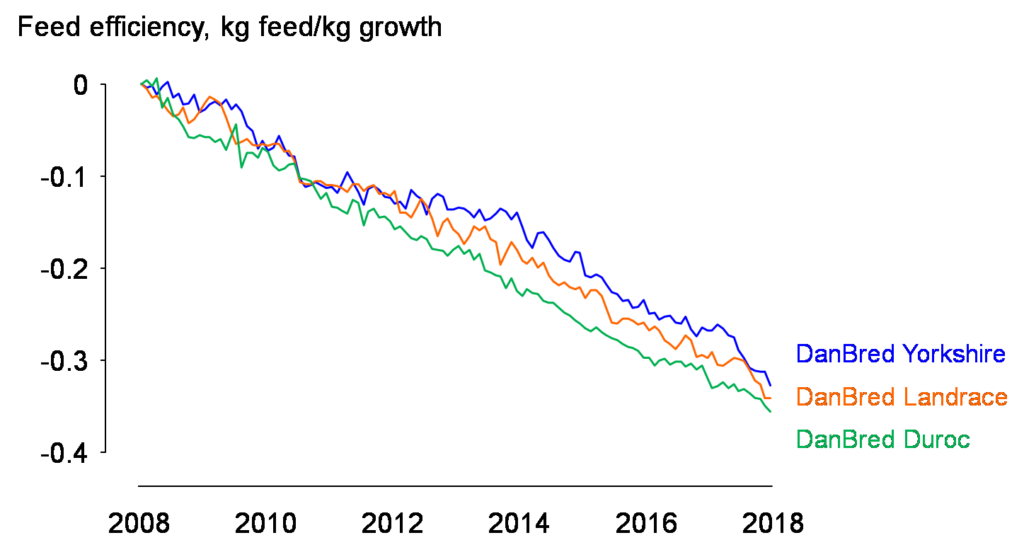

Figures: The cumulative genetic gain in (1) feed efficiency and (2) litter size at day 5 in the DanBred breeding programme from 2008 to 2018. In 2018, the level of feed efficiency was 2.17, 2.20, and 2.06 in DanBred Yorkshire, DanBred Landrace and DanBred Duroc, respectively. The litter size at day 5 was 14.0 and 13.0 in purebred DanBred Yorkshire and DanBred Landrace litters, respectively.
Breeding based on genetic selection
The breeding goal usually consists of a variety of traits that a breeding company wishes to improve upon along with the economic values of these traits, which are calculated based on marginal profit functions where profit = income minus costs.
An increase in the profit of a given trait may arise from changes in either income or costs, but typically reflects reduced costs rather than increased income. This is because profit arising from income from additional output at herd level may be related to management decisions rather than genetic selection.

